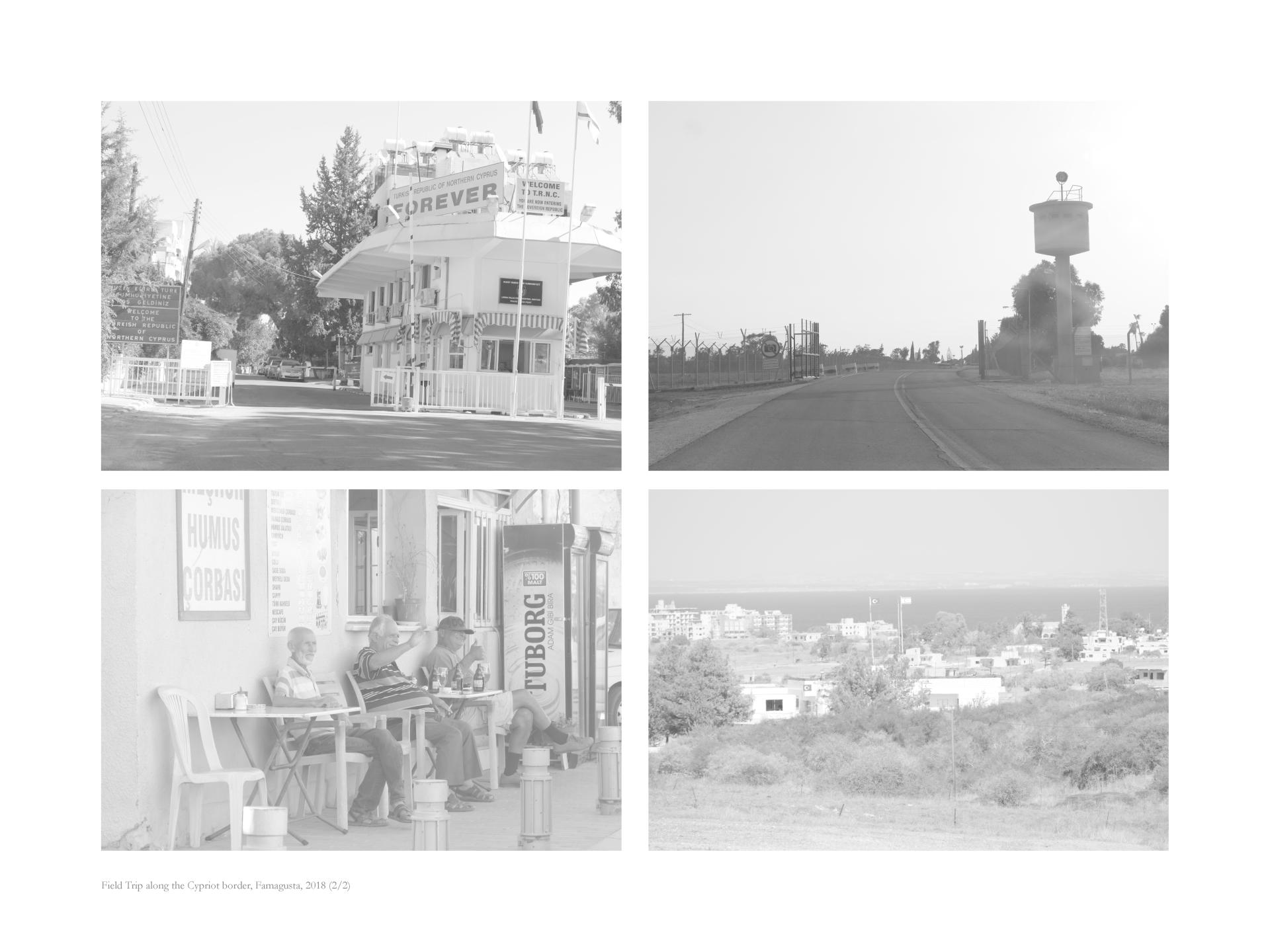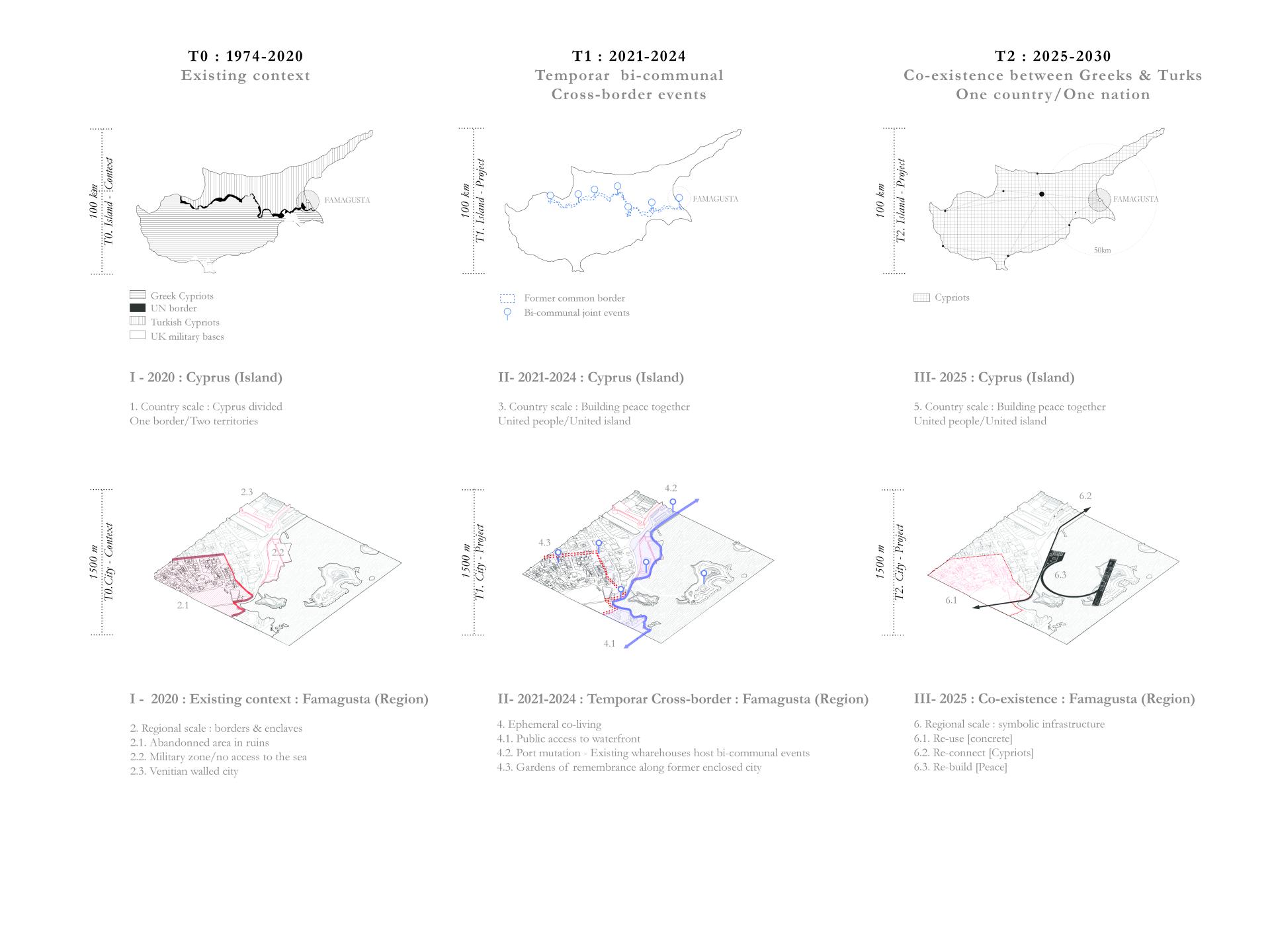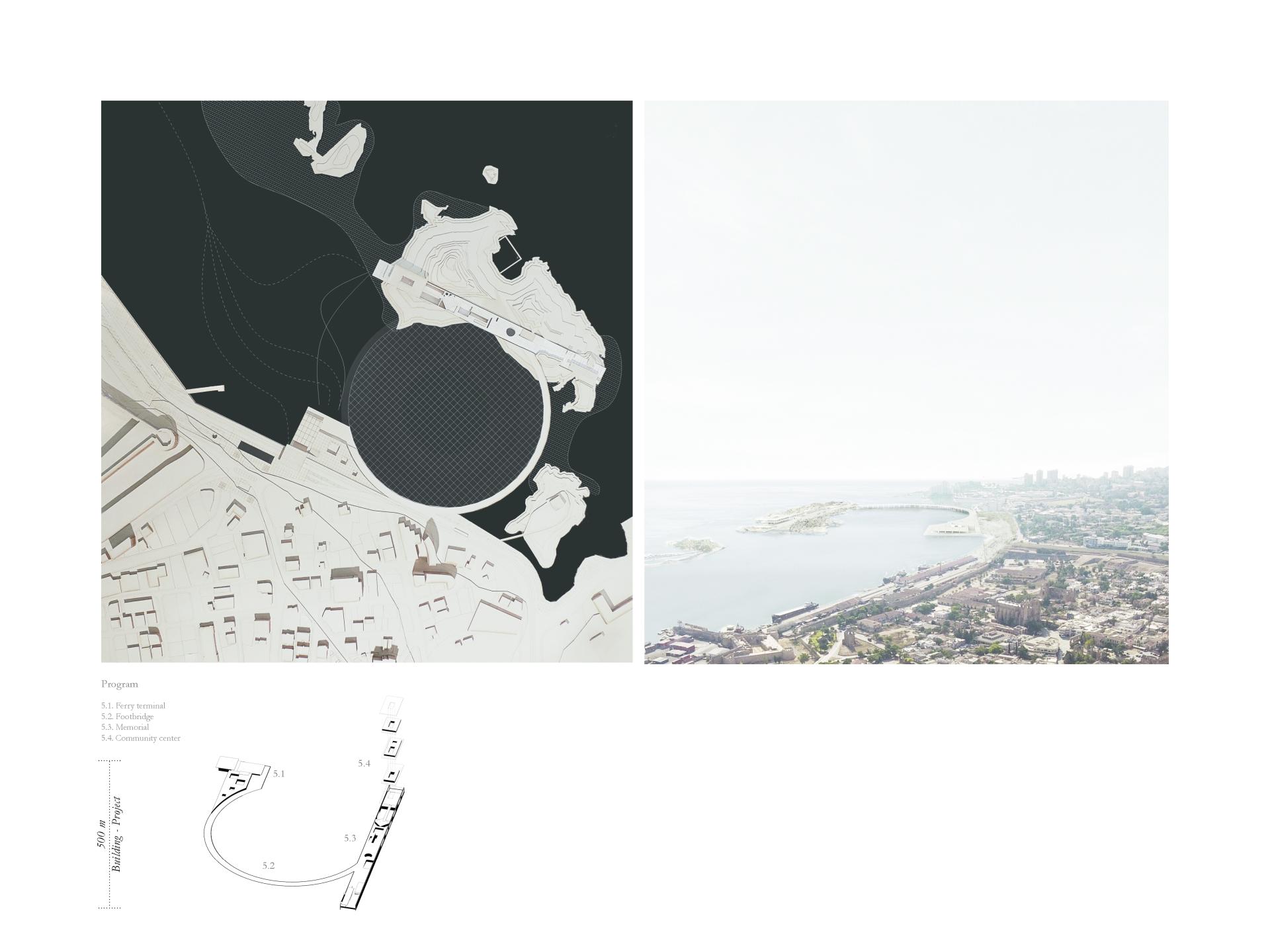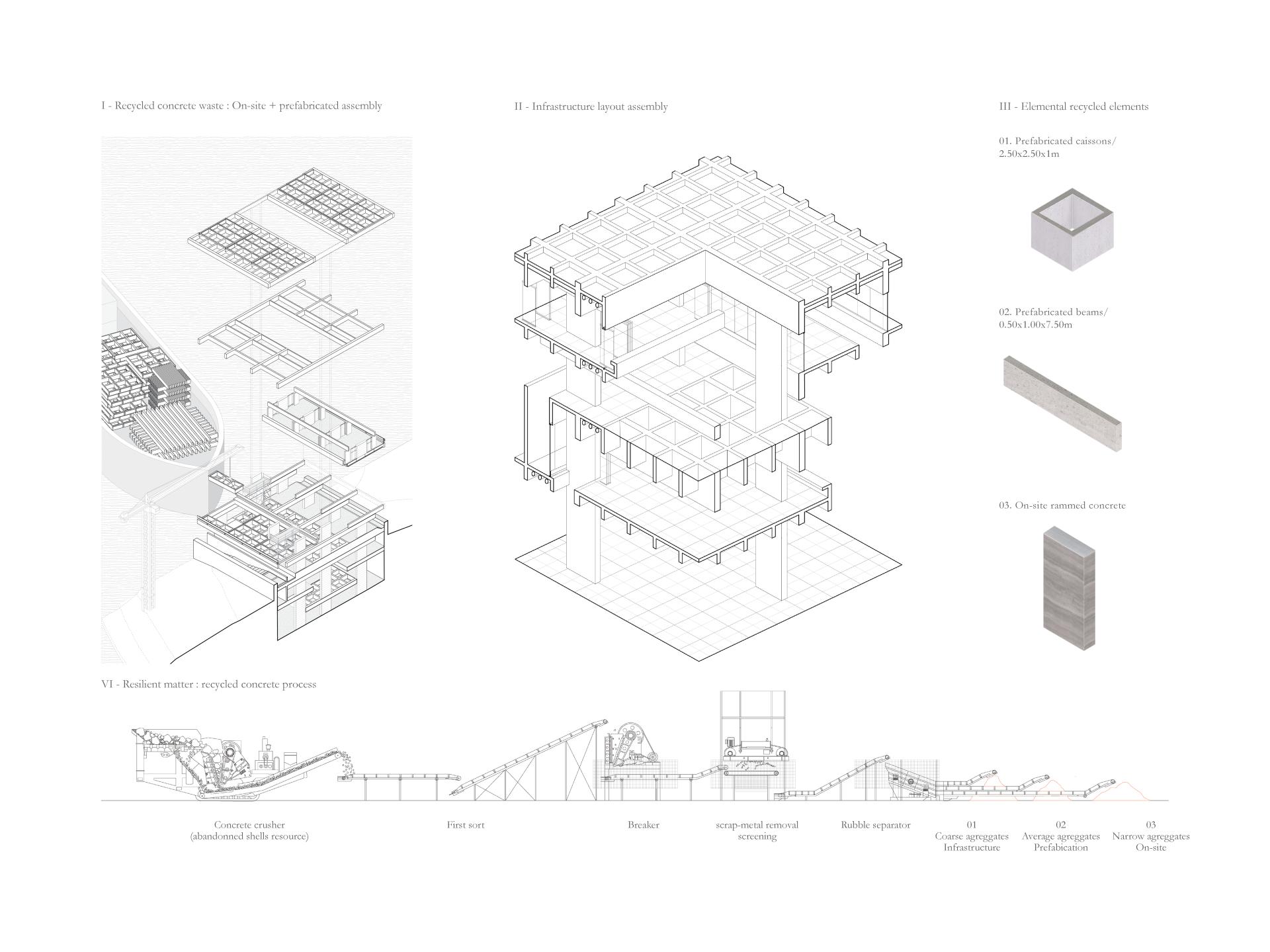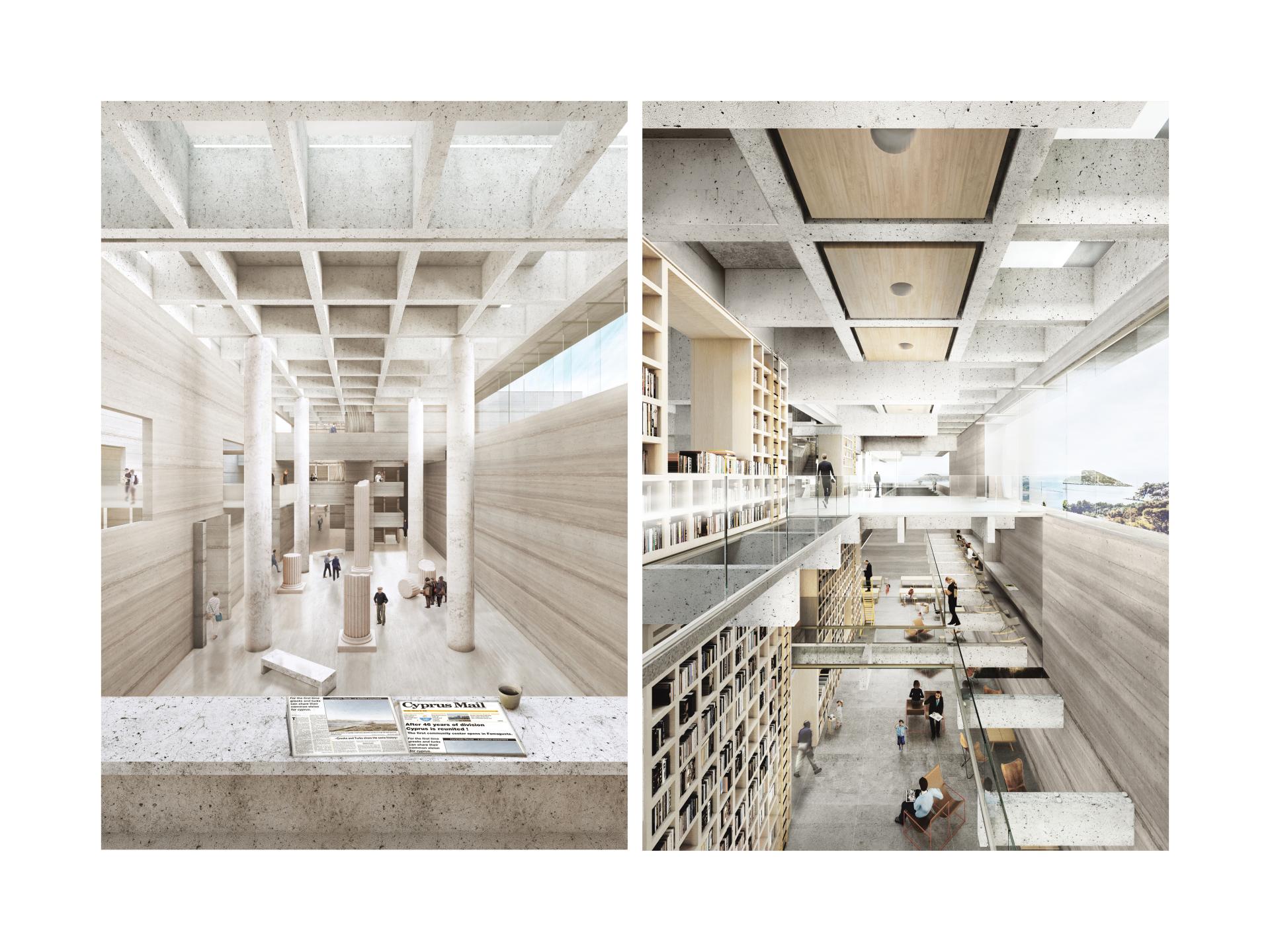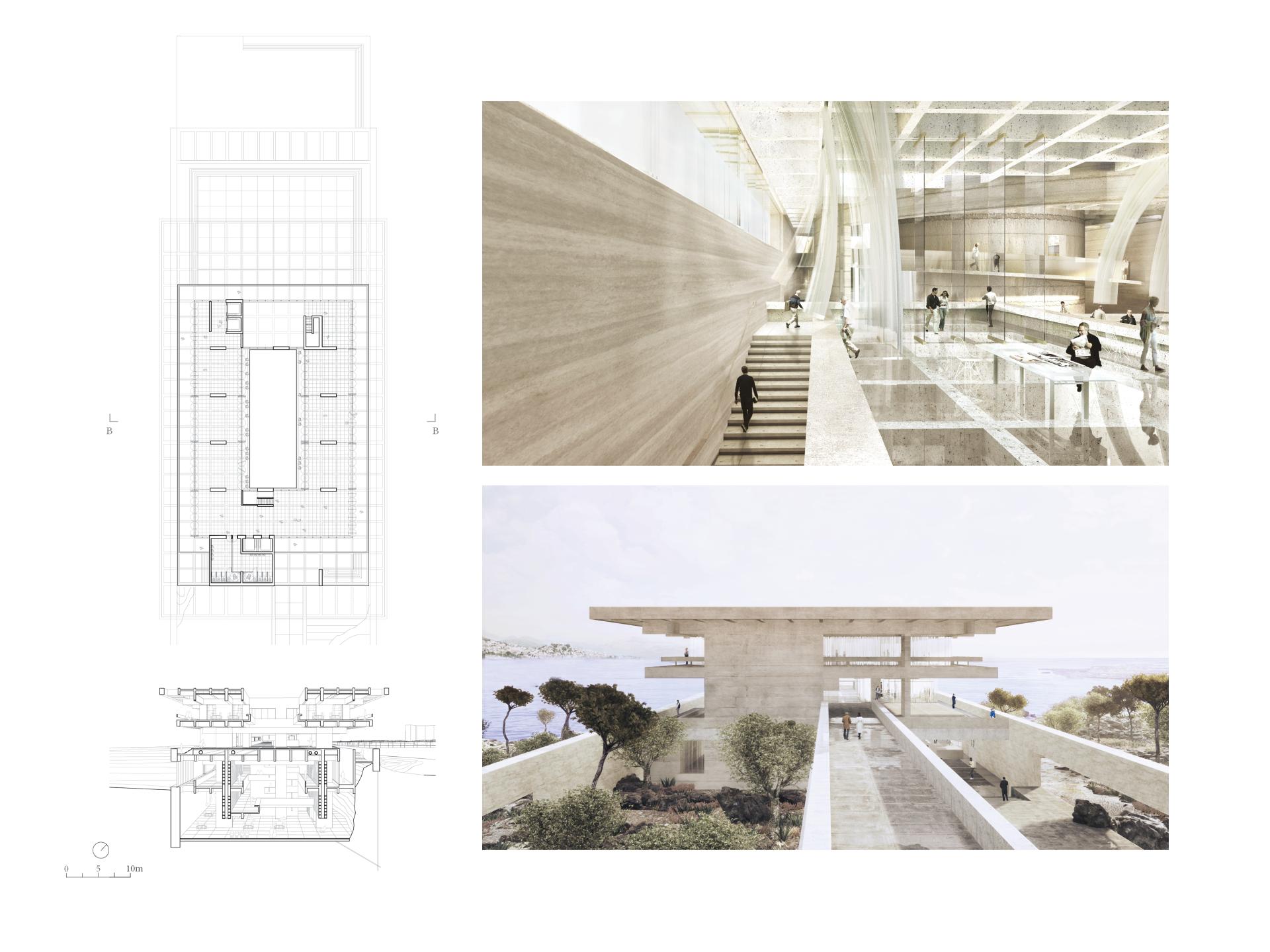INTERFACE FOR PEACE IN CYPRUS
Basic information
Project Title
Full project title
Category
Project Description
In 1974, a war has irrevocably separated Greeks & Turks in Cyprus. From then, the two communities have lived back to back, separated by an impassable border. Omitting their shared history and roots, both communities developed on each side an irreconcilable antagonism ingrained for generations. Since 2006, a dialogue has been restored and more Cypriots are dreaming of a united island despite the Historical mutual distrust.
This project wills to restore peace in Europe through common grounds.
Geographical Scope
Project Region
Urban or rural issues
Physical or other transformations
EU Programme or fund
Which funds
Description of the project
Summary
01. Cyprus : A divided island
Greeks & Turks Cypriots remain separated by a border since 1974. Peace talks since then have failed. This intractable conflict is known as the "Cypriot Conflict". Hope remains, but so does resentment and loss.
02. Famagusta :neutral interface ,first step for Peace in Cyprus
While the control of land has always been conflicting, the sea is considered as a public good. It is the last neutral refuge for both
communities; the only place where peace-building can take shape in mutual trust. The project is based on a timeless approach of common elements that unite Cypriots beyond their respective communities. The common elements are decayed in common Ruins, common Grounds & common Future.Common Ruins : The abandoned suburb of Famagusta is a "no man's land" since 1974. These ruins are the outcome of a tragic common past, the demonstration of the peace talks failures. Ruins are turned into a costless resource to rebuild the coastline common facilities.
Common Grounds : A symbolic continuous infrastructure encloses common grounds to Turks and Greeks within a radical form capable to
contain the chaos of the five passed decades and to hold out the five centuries to come. Architecture is meant to remain in a state of equilibrium despite the political, climatic & religious rifts.
Common Future : Above the sea, a continuous esplanade leads to a sanctuary of common knowledge. Emerging from the horizon, a
community center, basis of a shared future, is the guarantor of an effective peace in Cyprus .
03. Learning from peace-building process
Divided by religious or ethnic patterns, countries all over the world face the same issues. Learning from the case study of Cyprus, the resolution of communautary disputes is deeply a matter of shared public interfaces.
Key objectives for sustainability
01. A societal rebirth
Sustainability embodies different meanings in this project. Common culture is what makes one single society.
The project recalls through a summarized historic vocabulary, all cultural heritages claimed by Cypriots as their common roots. A memorial and a community center highlight the fraternal links that unite Greeks and Turks. Cypriots finally can build their upcoming History in a shared place. They build together layer after layer the on-site concrete pillars of the community center that will shelter the first shared house for a common future.
02. Recycle + Reuse concrete waste
The projected shared interface, is built from recycled concrete waste. The buildings exposed to climate hazards are a danger for local population. What can not be repaired is crushed and reused to rebuild new infrastructures. The new matter carries people’s remembrances of a sentimental common past.
03. Building on site with local workforce
Constructive elements are recycled/produced with local materials/workforce. While beams and floor slabs are produced in the recycling factories, the pillars are casted on site by local workforce. Each day, a layer of concrete is added on each pillar by workers from both communities to reinforce the bounds that unite Greeks & Turks. These collective pillars hold the whole monument and Cyprus' society.
04. Adaptability to future uses
Acting as a dig to protect Famagusta's harbor, This collective monument is as a flexible and adaptable grid that allows versatility and future development of the current infrastructure. A Memorial and a library establish the perpetual duty of remembrance. Archiving memories, collecting times and testimonies in a sanctuary so that Cypriots can preserve a common history and collective memory. Sustainability means there, that the building carries enough resiliency to adapt to the uses of today, but will be able to adapt to the uses needed in the upcoming 100 years.
Key objectives for aesthetics and quality
01. Reclaiming the Sea
A journey across the sea calls Cypriots to introspection. While the concrete ruins of abandoned buildings are being transformed progressively into common infrastructures, a silent place offers an overview of a country at yard for reunification and communities' peaceful coexistence. In an island that has been divided by religious and ethnic concerns, a neutral interface has to be non-partisan and shall embrace a new common culture. Religious symbols leave room for common Cypriot symbols.
02. A journey of forgiveness : a sensory experience
Cypriots who take the path of forgiveness, go through successive sensory experiences. The blinding light that reflects in the sea when
crossing the footbridge, leads them to a dilemma. On one hand, one can travel in the depths of the memorial, witnessing all common roots and shared History to Greeks and Turks. History fragments are set up in sequences. This is not meant to be a museum. On the other hand, visitors can choose to go through the continuous esplanade above the sea,witnessing finally the historic harbor and the the former abandoned city at yard for reconstruction. It is about a continuous spatial experience to convene a reported period of Common Peace.
03. From common Grounds to common Future
A bridge crosses the void that has been dividing Greeks & Turks for 48 years. Below, the genuine and untouched land appears as common roots to both communities. The Sanctuary establishes a sentimental connection with the reality of a place through a specific and perceptive relationship with the surroundings. Healing the wounds of a 48 years lasting conflict to build peace in Cyprus, the continuous monument is an act of care and recovery for 200.000 lives that have been broken with the Cypriot Conflict. Finally, the Mediterranean sea offers a physical place for debate and community self-determination : A resilient structure for an adaptable future.
Key objectives for inclusion
01. Famagusta a case study for post-conflict cities
It is estimated that 40% of the Greek and over 50% of the Turkish Cypriot population of Cyprus , were displaced by the Turkish invasion of 1974. 165,000 Greek Cypriots and 45,000 Turkish Cypriots have been evicted and never returned home. In both communities, Cypriots are refugees in their own island. In this conflict, what was supposed a provisional evacuation shifted into a permanent exile. The project aims to translate the aspirations and needs of those refugees and their children into new shared places, and advocates as the only option for co-existence a reunited island of Cyprus.
02. Building a collective memory, shared by Greeks & Turks
It has been more than four decades that each community builds its own story as a unique victim of the Cyprus conflict, enhancing feelings of anger and injustice across generations. The project focuses not only on building a new shared environment but also to rebuild a collective memory. This memory held by the ancients is conveyed to young generations as a burden to carry. It has to shift towards a collective duty of remembrance and forgiveness to move on.
03. Building together an inclusive society
Cyprus had very few years of self-determination before it was once again under the aegis of more powerful states. Hence Cypriots have been tempted to reject their own identity to embrace the allied states. Before war, Famagusta was known as a cosmopolitan city at the forefront of education and culture. Building a collective society made of Greeks & Turks means a complete overhaul of political, institutional, and economic patterns in order to bound new ties. We involve in this societal process a wide broad of actors including NGO, politics, inhabitants from both sides. If no common ground is found within political talks, we believe it can be found in a bottom-up process. Taking back their self-determination, every Cypriot is free to live among a cosmopolitan society.
Physical or other transformations
Innovative character
01. Where does Europe end?
The European Union has so far avoided setting geographical limits on Europe ; even defining them would mean making political, cultural and financial choices. Time to rethink the whole project.
Europe is at its edge. Recent tensions showed us that we can stand as as a collective. It seems now clear that there is an inside and an outside. The project we adress in Cyprus is about this Inside/Outside relation but calls awareness on the division line that defines two worlds and that names people originally from same place distinctly. What appears as a line on maps is in fact a thick fringe. This residual space that belongs to neither side is a place of shared possibilities as well as any places that none of community reclaims as exclusive.
02.Post conflict areas : "Handle with care"
The end of open warfare doesn't mean the cessation of hostilities, fear and mutual distrust. This has to be clear, such cities can be rebuilt at the only condition that a societal alliance is granted. Rebuilding post conflict areas, goes along with new common symbols, and a shared collective history. People remembrances has to be considered as a resilient collective memory granting the fondations for peace.
03. An idea of Europe : common horizon
Europe is an idea that goes beyond the meaning of cartography and borders, a system so powerful that it allows us to consider a common world united around living together. If the construction of Europe was made by coal, iron and steel, history must continue in connection with the soil and its roots. Our project seeks common roots resilience of various people looking in the same direction : a peaceful and unified Europe.

